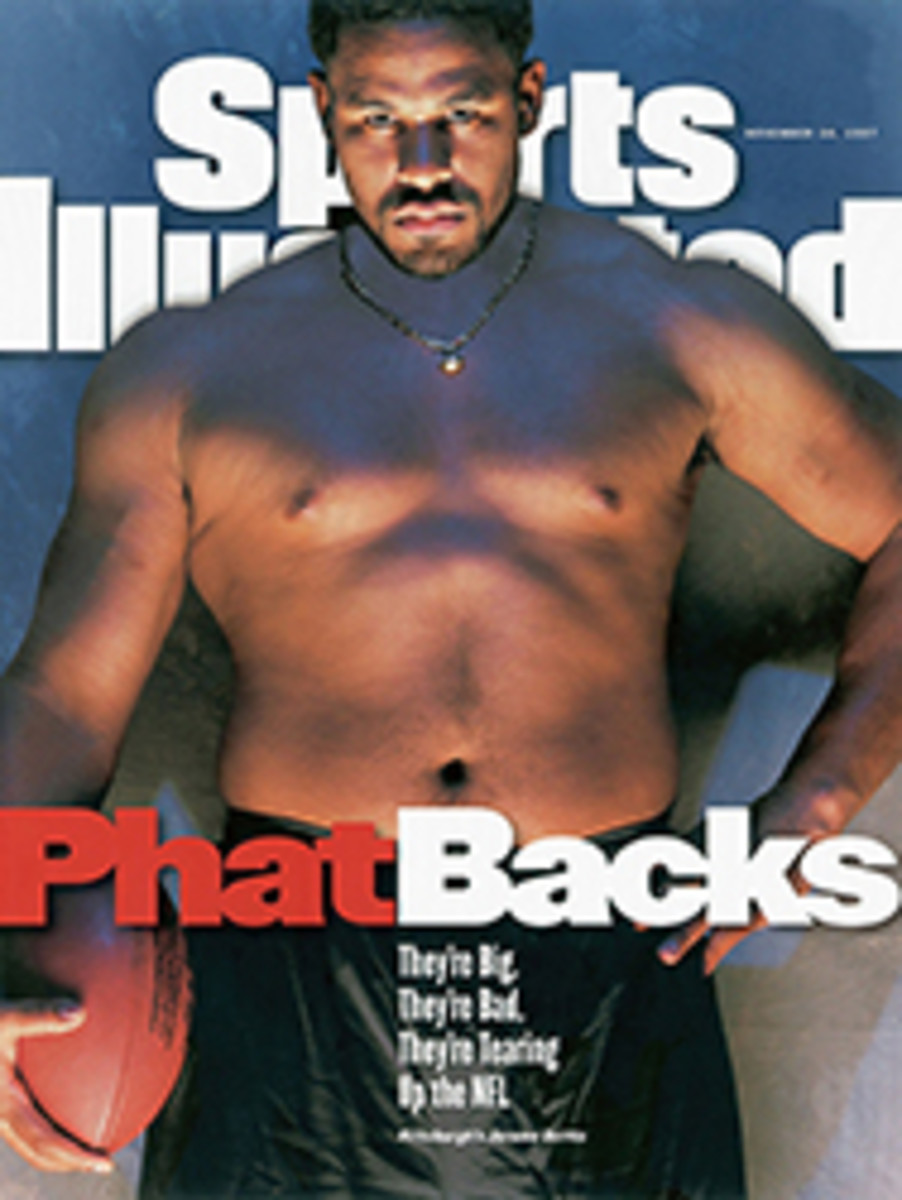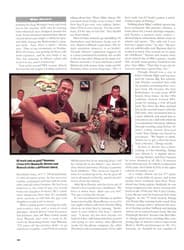
BRONKOSAURUS BRONKO NAGURSKI WAS, LITERALLY, A MONSTER OF THE MIDWAY
Big backs were a part of the NFL in its infancy, but when you
talk about really big backs, you have to start with Bronko
Nagurski (left, with ball). He came into the league in 1930,
when a normal-sized lineman weighed about 210 pounds and it was
not uncommon to find some at less than 200. Nagurski went 225,
and later in his career he got up to 238. The NFL had never seen
such size in a ballcarrier. Add to that Nagurski's remarkably
quick takeoff speed and his desire to punish the people who
tried to tackle him, and you had a truly formidable weapon.
Today, with anabolic steroids and weight training, Nagurski
would probably go in the 275-pound range. He had the structure
to carry that kind of weight. Three days before the 1984 Super
Bowl, the NFL brought the 75-year-old Nagurski to Tampa for a
press conference. He answered questions sitting in one of those
classroom chairs with an armrest. I was sitting next to him, and
while he spoke, I stretched out my left arm and measured my
wrist against his. Nagurski's was twice as big as mine, and I
weighed 240 at the time.
Five years later I asked a former Chicago Bears teammate,
quarterback Sid Luckman, about Nagurski. "A monster," Luckman
said. "The neck, the hands. They measured him for a championship
ring in 1943, when he made his comeback, and his ring size was
19 1/2."
I watched film of Nagurski. He would get into rages. He would
attack people, both offensively and defensively, where he played
end or backed up the line. After I had read all those quotes
about how he was impossible for one man to stop, one thing
puzzled me. Where were the big numbers? He averaged less than 10
carries a game. The Bears' media guide credits him with only one
100-yard afternoon over a nine-year career. I asked him about
that.
"[George] Halas stockpiled backs," he said, "and he believed in
spreading it around. Plus he wanted to keep me fresh for
defense, where I'd put in a full afternoon. How many of today's
1,000-yard runners would like to spend half the game playing
defense?"
--PAUL ZIMMERMAN
B/W PHOTO: ACME [Bronko Nagurski being tackled in game]
DR. Z'S TOP 10 BIG BACKS OF ALL TIME
1. JIM BROWN (Cleveland Browns; 1957-65). We don't think of him
as a big back, because he was such an elusive, graceful runner,
but 228 pounds was an impressive weight for a ballcarrier in his
time.
2. MARION MOTLEY (Browns, Pittsburgh Steelers; 1946-53, 1955).
He played most of his career at 238 pounds, ran with surprising
speed, excelled at pass blocking and backed up the line on
occasion.
3. BRONKO NAGURSKI (Bears; 1930-37, 1943). In today's game he
would routinely crank out 1,500-yard seasons.
4. EARL CAMPBELL (Houston Oilers, New Orleans Saints; 1978-85).
At 5'11", 240 pounds, the Tyler Rose was explosive and ran low
to the ground. He could wear out a defense.
5. COOKIE GILCHRIST (three teams; 1962-67). At 252 pounds, he
was the first of the superheavyweights when he entered the AFL
in 1962 with the Bills. When aroused, he was frightening.
6. LARRY CSONKA (Miami Dolphins, New York Giants; 1968-74,
1976-79). Best playing weight: 238. Most impressive talent: the
ability to get low and tunnel under would-be tacklers.
7. JOHN RIGGINS (New York Jets, Washington Redskins; 1971-79,
1981-85). He began his career as a 230-pound halfback-fullback
type with niftiness and moves, and ended it as the 244-pound
Diesel, one of the greatest short-yardage runners in history.
8. ERNIE NEVERS (Duluth Eskimos, Chicago Cardinals; 1926-27,
1929-31). A tireless plunger in the middle. He weighed only 210,
but in his era that was bigger than most linemen.
9. JIM NANCE (Boston/New England Patriots, Jets; 1965-71, 1973).
His best weight was 240, but he got as high as 270. He was a
gathering force who always seemed to be running downhill.
10. JOHN HENRY JOHNSON (four teams; 1954-66). He was a punishing
230-pounder with a mean streak.

